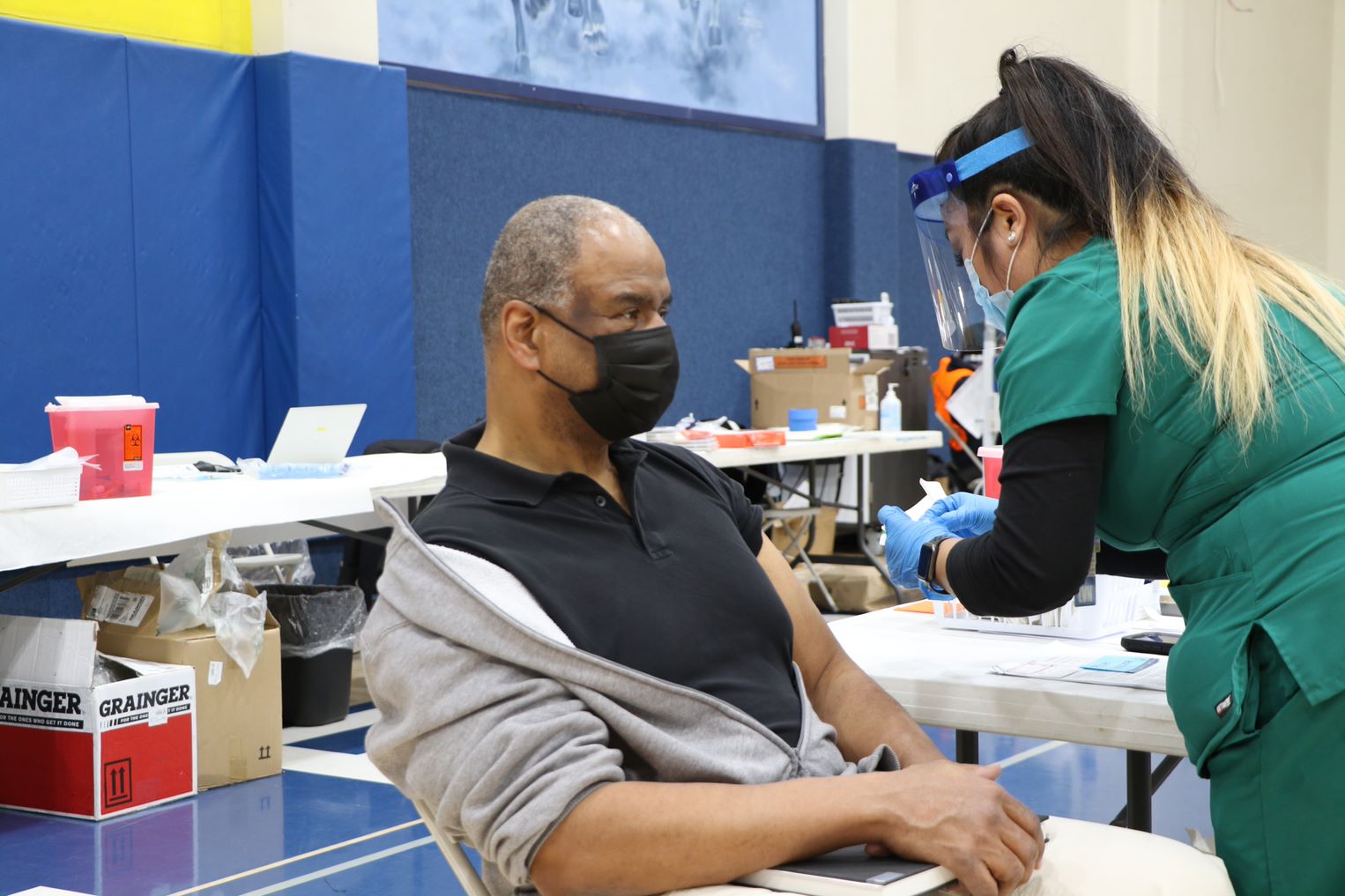The grim milestone of 1 million deaths from COVID in the United States underscores the need for continued vigilance against the virus.
![]()

A man gets a COVID vaccine shot in the Gilroy High School gym last year.
Morgan Hill Life file photo
This editorial is the opinion of Morgan Hill Life
Let’s not get complacent about COVID.
As we head into the summer, the level of the virus circulating in Santa Clara County remains high. And medical experts warn Americans might see a surge in the pandemic in fall and winter, especially with the more contagious omicron subvariant BA.5 strain now comprising a majority of COVID-19 cases in the United States.
 Experts at the Centers for Disease Control and Prevention say the data shows the rise of the highly transmissible subvariant, which has prompted concern about a new increase in cases. Mutations in BA.5, along with a related subvariant known as BA.4, show an increased ability to evade the protection from vaccination and prior infection. BA.5 now makes up 53.6 percent of U.S. cases, according to the CDC. BA.4 makes up another 16.5 percent. Adding the two means there is around 70 percent of infections of these new strains.
Experts at the Centers for Disease Control and Prevention say the data shows the rise of the highly transmissible subvariant, which has prompted concern about a new increase in cases. Mutations in BA.5, along with a related subvariant known as BA.4, show an increased ability to evade the protection from vaccination and prior infection. BA.5 now makes up 53.6 percent of U.S. cases, according to the CDC. BA.4 makes up another 16.5 percent. Adding the two means there is around 70 percent of infections of these new strains.
The Bay Area now has California’s highest COVID infection rates. The grim milestone of 1 million deaths from COVID in the United States underscores the need for continued vigilance against the virus. BA.5 is a game changer because it is resistant to natural immunities. People who have had COVID-19 before, even recently, are not protected. And the newest COVID variant is spreading quickly as it is more contagious — and likely more dangerous than previous strains of the virus, according to Dr. Peter Chin-Hong, an infectious disease specialist at the University of California, San Francisco.
 Throughout late March and all of April and May, not one California county found itself in the high COVID-19 community level. But with the new variants starting to spread, that changed at the beginning of June. As much as two-thirds of the state’s counties (38 counties out of 58) are now in the high COVID-19 community level. About 16 million people live in those counties, accounting for 42 percent of California’s population.
Throughout late March and all of April and May, not one California county found itself in the high COVID-19 community level. But with the new variants starting to spread, that changed at the beginning of June. As much as two-thirds of the state’s counties (38 counties out of 58) are now in the high COVID-19 community level. About 16 million people live in those counties, accounting for 42 percent of California’s population.
The experts also are seeing data indicating continued elevated levels of COVID — including BA.5 — in our wastewater at county treatment plants. According to the Santa Clara County Public Health Department, we have plateaued at a point where more than 1,000 people with infection are reported daily. In actuality, public health experts believe this is a vast undercount because many residents are using home antigen tests that are not reportable.
Health officials in Bay Area counties stress the importance of taking safety precautions, including continued masking indoors, as communities see a new swell of COVID cases and hospitalizations. Although not required, masking is strongly recommended by the California Department of Public Health for most public indoor settings. Health officials say wearing higher-quality masks (N95/KN95 or snug-fitting surgical masks) indoors is a wise choice that will help people protect their health.
“If you’ve chosen not to wear a mask in indoor public places recently, now is a good time to start again,” said Dr. George Han, deputy health officer for the County of Santa Clara Public Health Department. “Highly contagious subvariants are spreading here.”
Vaccines remain the best protection against severe disease and death from COVID. Free vaccination and booster appointments can be made at sccFreeVax.org or without appointment by going to the San Martin clinic at 80 Highland Ave. Monday through Saturday between 8:30 a.m. and 3:30 p.m.
Health officials say people should also stay home if they feel sick and get tested right away. Officials also encourage getting tested after potential exposure and limiting large gatherings to well ventilated spaces or outdoors. For people who are more likely to get very sick from COVID-19 infection, medications are available that can reduce your chances of severe illness and death. Talk with your healthcare provider right away if you test positive.
The indicators show the coronavirus remains prevalent in our communities. By remaining vigilant with public health measures, we can save lives — and not go back to the unhappy days of quarantine.






